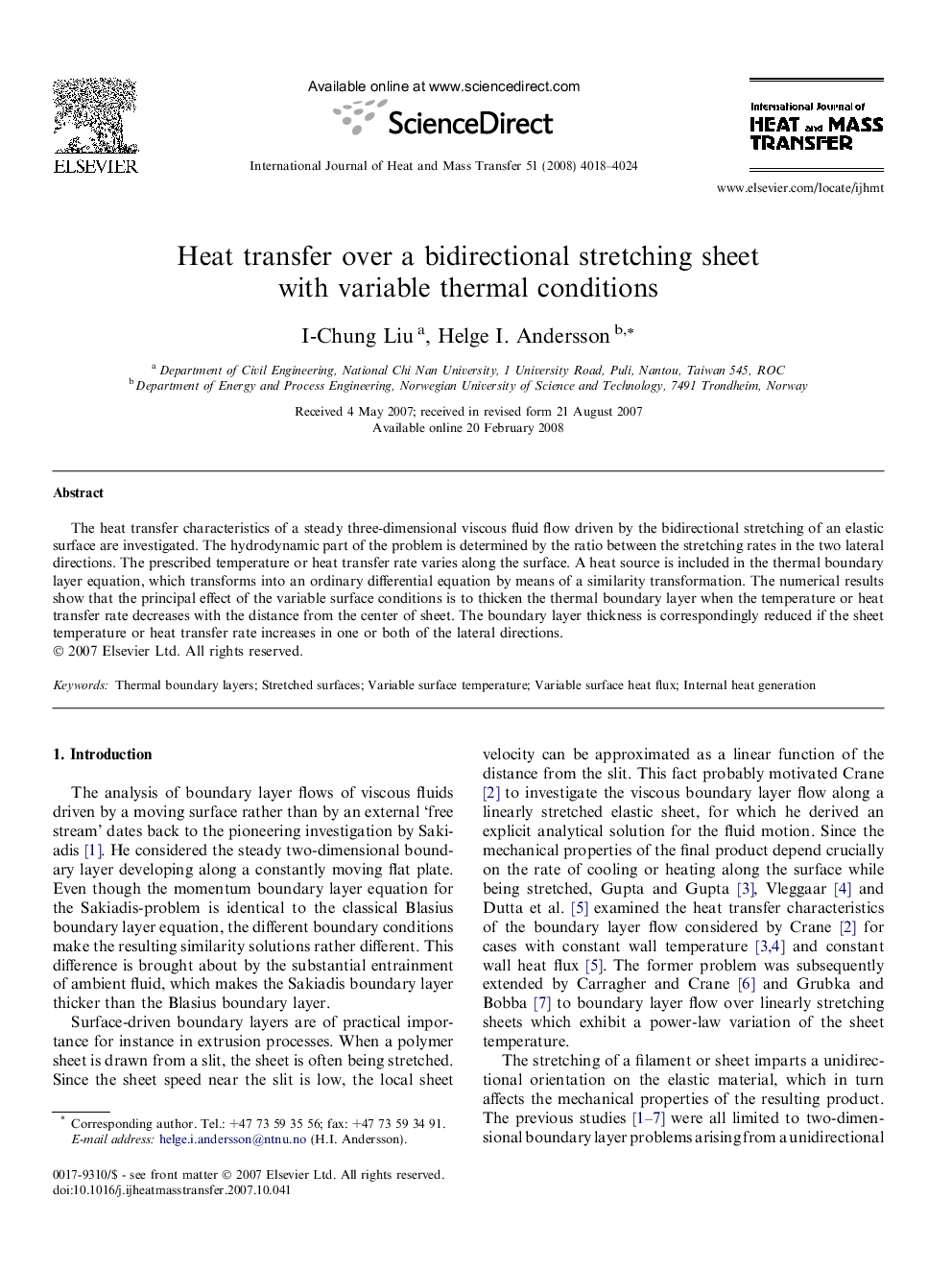| Article ID | Journal | Published Year | Pages | File Type |
|---|---|---|---|---|
| 660974 | International Journal of Heat and Mass Transfer | 2008 | 7 Pages |
The heat transfer characteristics of a steady three-dimensional viscous fluid flow driven by the bidirectional stretching of an elastic surface are investigated. The hydrodynamic part of the problem is determined by the ratio between the stretching rates in the two lateral directions. The prescribed temperature or heat transfer rate varies along the surface. A heat source is included in the thermal boundary layer equation, which transforms into an ordinary differential equation by means of a similarity transformation. The numerical results show that the principal effect of the variable surface conditions is to thicken the thermal boundary layer when the temperature or heat transfer rate decreases with the distance from the center of sheet. The boundary layer thickness is correspondingly reduced if the sheet temperature or heat transfer rate increases in one or both of the lateral directions.
